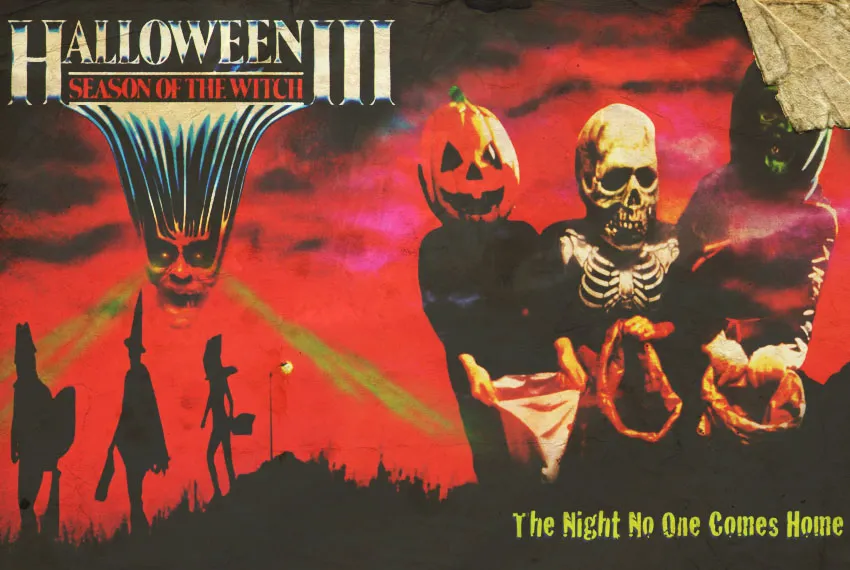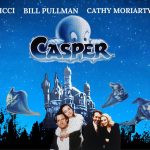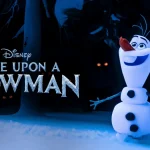Halloween III: Season of the Witch (1982)
- tranthuthuy
- October 3, 2024

“Halloween III: Season of the Witch,” released in 1982, represents a bold departure from its predecessors in the iconic Halloween franchise. Directed by Tommy Lee Wallace and co-written by him, the film diverges from the slasher roots of the original films and instead offers a unique blend of horror and science fiction. This ambitious installment has sparked debate and discussion among fans and critics alike, making it a notable entry in the realm of 1980s horror cinema.
Unlike the first two films, which centered around the infamous Michael Myers, “Halloween III” introduces a completely new narrative. The film opens with a chilling scene that sets the tone for the horrors to come. A man, played by the late Dan O’Herlihy, frantically runs for his life while clutching a mask, pursued by mysterious figures. This opening sequence immediately draws viewers into a world filled with tension and intrigue, hinting at a larger conspiracy lurking beneath the surface.
The plot revolves around the character of Dr. Daniel Challis (Tom Atkins), a cynical physician who becomes embroiled in a deadly scheme orchestrated by the Silver Shamrock Novelties company. The company produces Halloween masks that are intended to be the hottest selling item of the season. However, as Dr. Challis investigates the mysterious deaths linked to the masks, he uncovers a horrifying truth: the masks are imbued with a deadly technology that will trigger a gruesome fate for children wearing them during a televised Halloween special.
One of the film’s most compelling aspects is its commentary on consumerism and the commercialization of holidays. “Halloween III” critiques the ways in which marketing and mass production can lead to dire consequences, a theme that resonates deeply in today’s consumer-driven society. The film’s portrayal of a world obsessed with Halloween masks and the lengths to which people go to sell products serves as a cautionary tale about the darker side of capitalism.
Tom Atkins delivers a memorable performance as Dr. Challis, embodying the archetype of the rugged, resourceful hero. His character is driven by a desire to uncover the truth and protect innocent children, serving as a foil to the sinister machinations of the Silver Shamrock company. Atkins’ charm and charisma bring depth to the role, making him a compelling protagonist as he navigates the dangerous landscape of conspiracy and horror.

The film also features a strong supporting cast, including Stacey Nelkin as Ellie Grimbridge, the woman who becomes Challis’ ally in his quest for the truth. Their budding romance adds an emotional layer to the narrative, though it also follows the conventions of the genre, providing moments of levity amidst the mounting tension. Nelkin’s performance effectively captures the fear and determination of her character, making her a relatable counterpart to Challis.
Visually, “Halloween III” stands out with its striking cinematography and eerie atmosphere. The film is imbued with a sense of dread, enhanced by a haunting score composed by John Carpenter and Alan Howarth. The iconic Silver Shamrock jingle, with its repetitive and sinister melody, becomes a central motif, further emphasizing the film’s themes of manipulation and horror. This blend of sound and imagery creates an unsettling ambiance that lingers long after the credits roll.

One of the most notable features of “Halloween III” is its willingness to embrace the surreal and the bizarre. The film’s third act ramps up the tension with increasingly strange and nightmarish scenarios, culminating in a climax that leaves viewers questioning the nature of evil and the vulnerability of children. The blending of horror and science fiction elements, such as the sinister technology behind the masks, sets “Halloween III” apart from traditional slasher films, making it an intriguing and thought-provoking watch.
Despite its innovative approach, “Halloween III: Season of the Witch” faced mixed reviews upon its release. Fans of the franchise who were expecting another Michael Myers-centric slasher film were disappointed, leading to initial box office struggles. However, over the years, the film has garnered a cult following, with many viewers appreciating its unique storyline and thematic depth. It has been re-evaluated by critics who recognize its audacity and ambition, solidifying its place in horror history.

In conclusion, “Halloween III: Season of the Witch” is a bold and unconventional entry in the Halloween franchise that challenges viewers’ expectations of horror films. Through its engaging narrative, strong performances, and haunting atmosphere, the film explores themes of consumerism, the nature of evil, and the consequences of technological advancement. Tommy Lee Wallace’s direction and the film’s distinctive style make it a memorable experience that continues to provoke discussion and debate among horror aficionados. As it stands apart from the traditional slasher genre, “Halloween III” invites audiences to reflect on the complexities of human desire, manipulation, and the darker aspects of society, making it a truly unique chapter in the annals of horror cinema.
Suggested videos for you:
Suggested videos for you:










